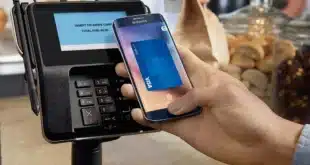With complaints from fuel marketers reaching a crescendo, Visa Inc. introduced on Thursday a sweeping new credit and debit card interchange rate structure for gasoline that leaves sellers better off for many consumer credit card transactions over $30. In conjunction with the new rates, the card network also announced it is planning to introduce a system that will allow the network to clear fuel purchases in a matter of a few hours rather than over a span of two to three days. Nevertheless, fuel sellers are underwhelmed by the moves. “It looks like it's more smoke and mirrors,” says a spokesman for the National Association of Convenience Stores, a vocal critic of interchange that represents 2,200 retailers. “There are so many qualifiers. There are some transactions where it makes things worse by swapping a lower percentage for a higher fixed fee.” Effective July 18, Visa is capping interchange on consumer debit card transactions at 95 cents. It is also raising the ceiling at which it prices unsigned transactions at higher card-not-present rates from $75 to $125. Effective with its semi-annual business review in October, Visa is cutting its consumer credit card rates for gasoline to 1.15% plus 25 cents, regardless of the type of card. Typically, rewards cards carry higher interchange than non-rewards cards to fund the consumer incentives. And it plans to raise the card-not-present threshold even higher, to $500. The lower rates and accelerated clearing times come as gasoline marketers find themselves paying out more and more revenue in card-acceptance costs with the steady upward march of gas prices. The squeeze has led in isolated cases to gas stations refusing to accept cards or restoring the practice of discounting for cash. It has also underscored what gasoline marketers see as an unfair fee structure unilaterally imposed on them by the card networks and led to more pressure on the networks to accommodate merchant complaints about interchange. In a statement it released on Friday, the Merchants Payments Coalition called the Visa changes “less than meets the eye” and pointed to possible “negative effects.” The MPC, a coalition of merchant trade groups formed two years ago to contest card interchange, has pushed for negotiable interchange rates, a cause that has found champions in both houses of Congress, where bills have been introduced to require the card networks to negotiate rates with merchants and to provide for panels that would impose rates when negotiations fail. The NACS spokesman calls Visa's moves “a carefully crafted PR ploy to stop Congressional action that has steamrolled over the past few weeks.” While Visa's new rate for consumer credit card transactions carries a comparatively high fixed fee of 25 cents, a Visa Signature credit card transaction will carry the same interchange?59 cents?on a $30 transaction as it has under the current rate, 1.65% plus 10 cents. Hence, merchant acquirers?which pay interchange to card issuers and then pass it on to merchants?will pay less for any Signature transaction over $30. For the higher-rate Signature Preferred card, that threshold is almost $16. The savings on a $60 fill-up using a Signature card comes to 15 cents, or 14% less than the current fee. Though it ordinarily begins levying a higher, card-not-present rate on transactions above $75 not carrying a signature, Visa's decision to raise that ceiling to $125 could magnify the interchange cut. A $100 fill-up with a Signature card, for example, will cost $1.40 under the new rate, or 42% less than the $2.40 resulting from the current rate. The cap on consumer debit card transactions comes nearly two years after a similar move by MasterCard Worldwide, which applied to both consumer credit and debit cards (Digital Transactions News, Sept. 5, 2006). Again, because of the hike in the card-not-present threshold, the savings begin to kick in at $76, where interchange will now be 95 cents, compared to $1.37 at the rate in effect until July 18. Savings are highest on large tickets. A $100 debit transaction will now cost 80 cents less than the current $1.75 The new ceilings for card-not-present pricing to apply are tied to the new clearing mechanism, which Visa has dubbed “real-time clearing.” This applies to both credit and debit card transactions but is primarily aimed at the approximately 70% of Visa gasoline purchases done on debit, says Edward Fordyce, head of global cross platform-product development at Visa. It will allow merchants to send settlement files within two hours of the original authorization rather than in end-of-day batches, which should result in faster clearing times. This, in turn, should allow issuers to release sooner the holds they place on cardholders' accounts while they wait to match clearing files with authorizations, Fordyce says. With a higher ceiling before higher rates kick in, fewer consumers should experience a pump shut off, he adds, as marketers seek to avoid a rate downgrade. Tickets above $75 account for about 5% of Visa gasoline transactions, but that percentage “will increase as gas prices increase,” Fordyce says. “It's a small but growing problem, and we're trying to head it off.” Real-time clearing will also allow merchants to specify their own authorization estimates, which they could link to the type of transactions they process. Truck stops, for example, might want to set higher limits than consumer-oriented stations, Fordyce says. Systems work will be required at both issuers and acquirers to make real-time clearing happen. That work, combined with necessary testing, required an October effective date for the move, Fordyce says.
Check Also
CIMB Bank Picks ACI for Payments Update and other Digital Transactions News briefs from 5/23/25
Payments-technology provider ACI Worldwide Inc. announced CIMB Bank, said to be the second-largest financial-services provider in Malaysia, …




